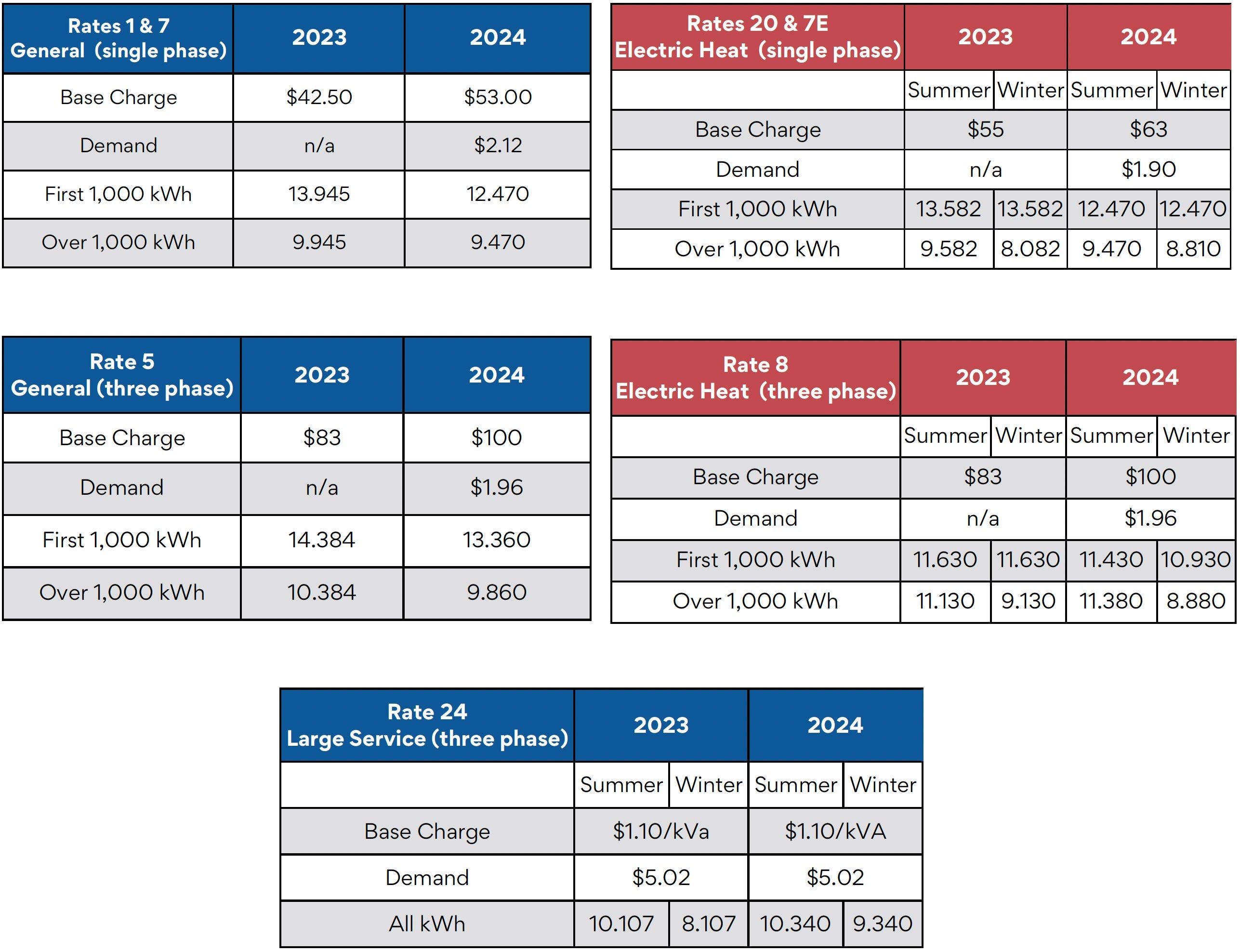Summary
Eastern Illini Electric Cooperative (EIEC) currently has two main billing components, a Base Charge and a per kilowatt-hour (kWh) energy charge. Beginning in March 2024 electric use, we have modified all rate structures. Simply put, we're lowering our kWh energy charge, raising our base charge, and adding a new demand component. Overall, this will result in a 2.5 percent rate increase.
Background
In 2022, we began an extensive cost of service and rate study. That study showed us that while the cooperative was doing okay financially, we weren't quite collecting enough to properly maintain our distribution system. It further showed that a 2.5 percent rate increase was necessary to maintain system reliability and help cover the rising costs we've all seen in recent years.
As we continued to analyze how we collect revenue from members, we determined that many of our fixed costs were actually being collected through our variable kWh charge. This is concerning because even simple things like mild weather can greatly impact kWh sales, and thus our ability to collect our needed dollars to maintain a safe and reliable electric distribution grid.
That lead our Board of Directors to study the possibility of adding a demand component to all bills. Ultimately, they decided that adding a new demand component will more equitably distribute costs to each member based on their unique impact on the electric system, and will allow us to collect a larger percentage of our distribution fixed-costs separate from the variable kWh component.
What is Demand?
Demand refers to the maximum amount of power (measured in kilowatts or kW) that is being consumed at a specific time. It is related to, but different than, kWh, which is the amount of power used over a period of time. Imagine taking your car on a road trip. The fastest speed you drive at any given time during your trip would be similar to your peak demand. The total miles you drive on your entire trip would be like your kWh.
With our new demand component, we will calculate each member's demand every 15 minutes. The largest of those 15-minute measurements will be that member's peak demand for the billing period. That peak demand will be multiplied by the demand value for each rate class to get each member's demand charge for that billing cycle.
Why are we now charging for Demand?
Introducing this new demand component will allow us to more accurately bill each member based on their specific impact to the electric system. We must build and maintain our distribution system to be able to handle the largest amount of power that each member uses...even if it only happens a few times a year. Demand is the best indicator for those peaks in electric use.
Since most member's demand is fairly constant from month to month, this also allows us to collect more of our fixed costs in less variable components. We anticipate that these changes will provide better financial stability for the co-op, and more fairly allocate costs based on each member's unique impact on the electric system.
We hosted a series of member meetings in the fall of 2023 to discuss these changes in detail.
If you'd like more information about the changes, or an analysis showing your individual impact, please contact us at 800-824-5102 or info@eiec.coop.

